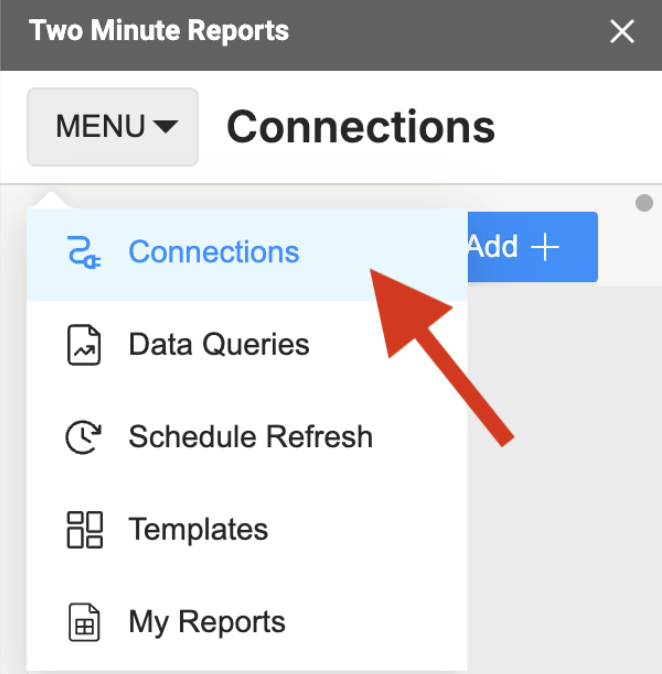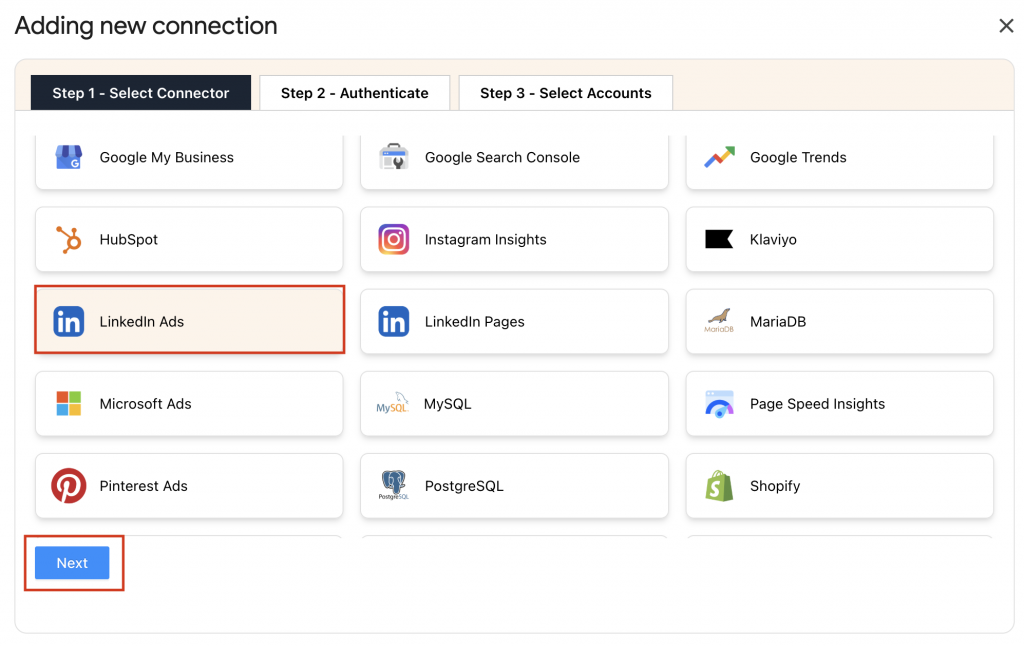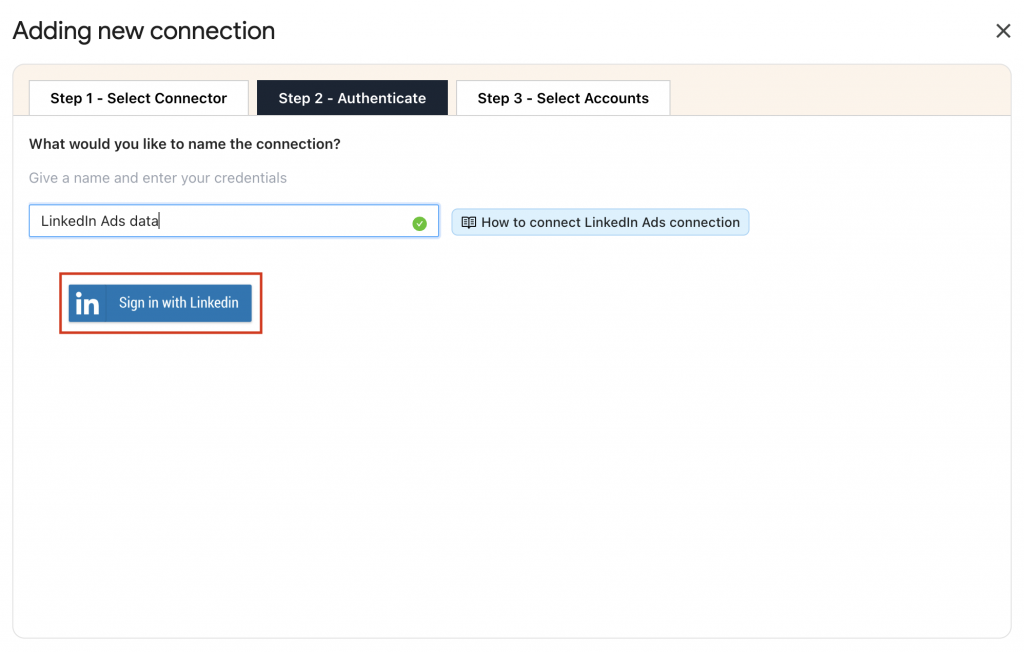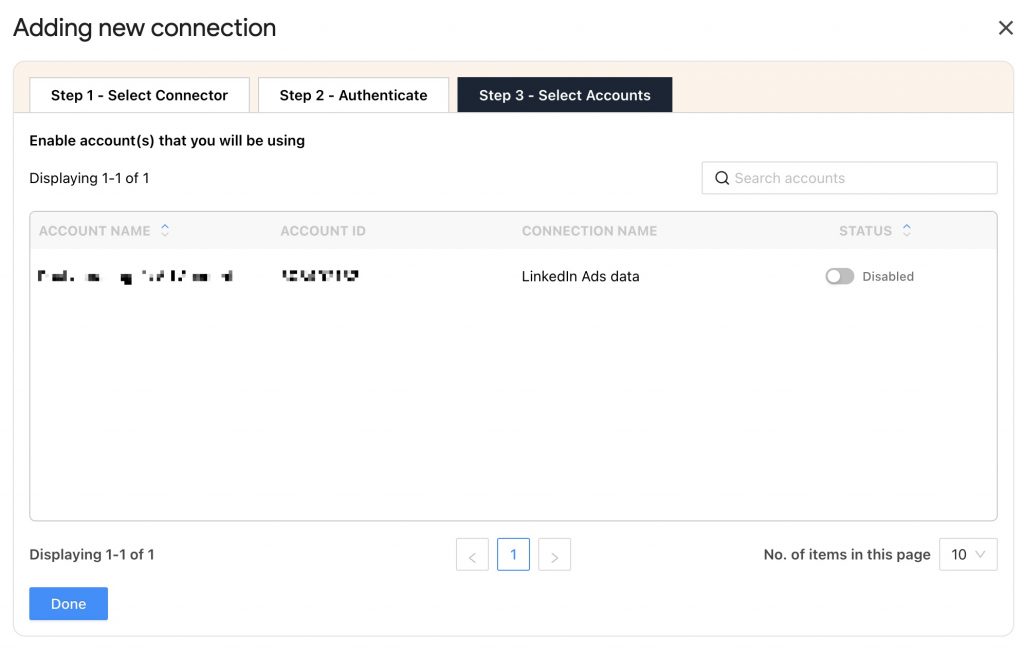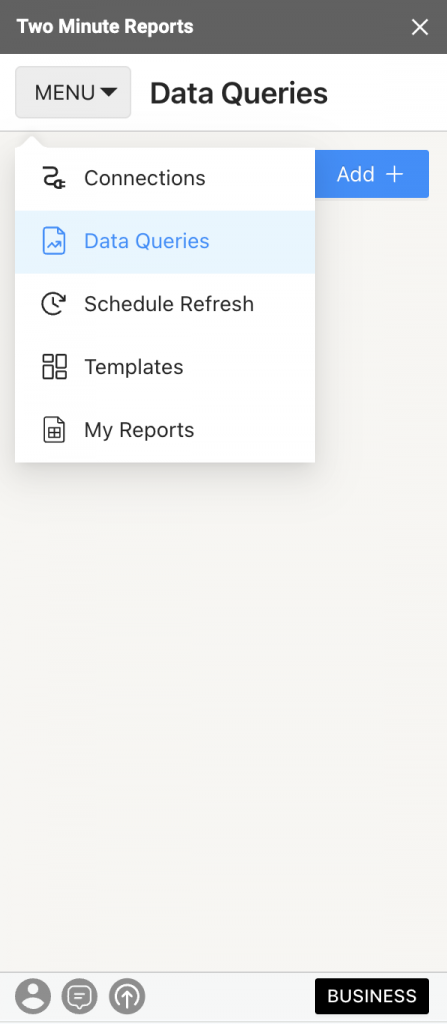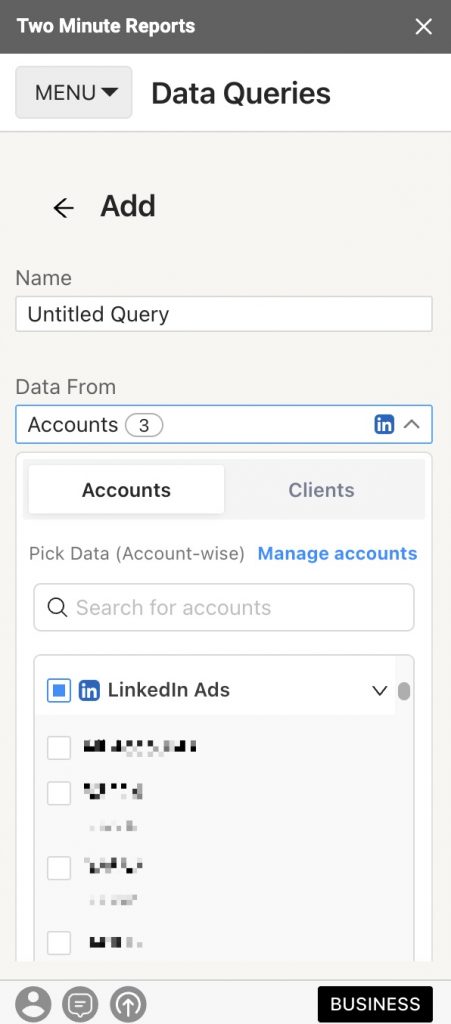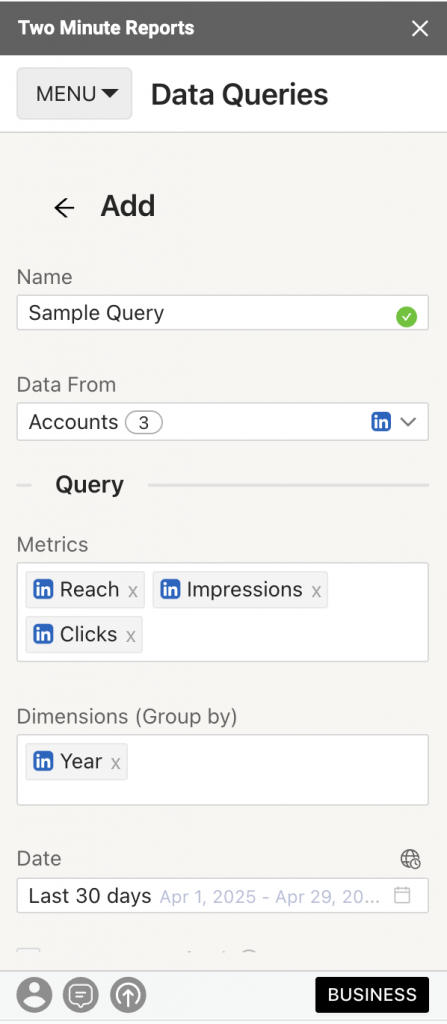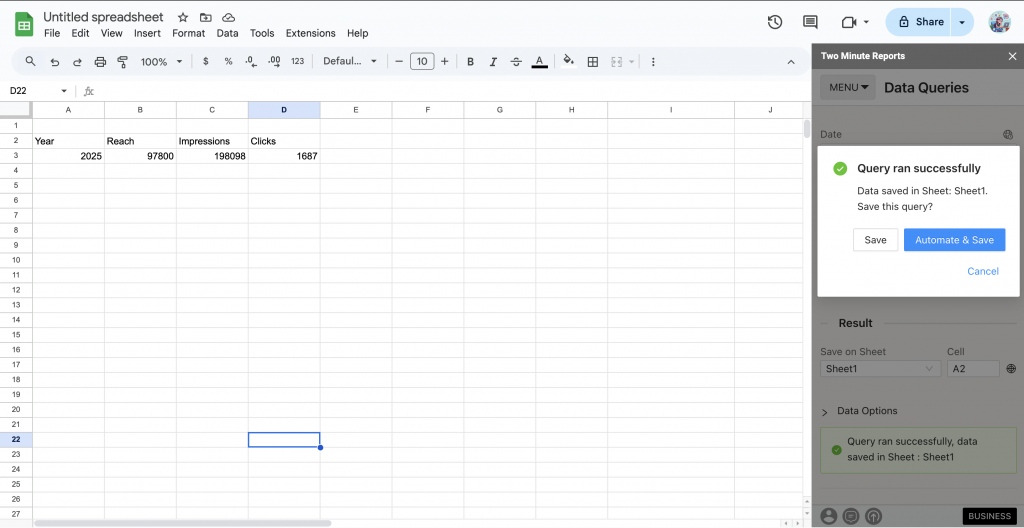Streamline your campaign reporting with TMR’s LinkedIn Ads connector. This tool allows you to quickly gain insights on ad performance, conversions, and ROI – directly within Google Sheets without coding. Before connecting your LinkedIn Ads data to Google Sheets, please ensure you have the following permissions:
Required permissions
- You must have at least Viewer access to the LinkedIn Ads account. For guidance on granting access, please refer to the LinkedIn help article.
- You must have Admin access to the Company page to measure ad content, headlines, images, CTAs, and metadata such as impressions and clicks.
Once you confirm these prerequisites, follow the steps below to connect your LinkedIn Ads data to Google Sheets through TMR.
Step 1: Install and Launch Two Minute Reports
Begin by installing TMR in Google Sheets using this step-by-step tutorial: How to install TMR in Google Sheets?
Once done, you can connect your LinkedIn Ads account to extract campaign data into Google Sheets.
Step 2: Create a new Connection to your LinkedIn Ads account
| A Connection is a link between the data source and the Connector. For example, you must use the LinkedIn Ads Connector to create a Connection with your LinkedIn Ads account to get your ads data. |
When the “Adding New Connection” dialog box appears, complete the following three key steps to access your LinkedIn Ads accounts:
- Selecting the LinkedIn Ads Connector
- Authenticate your account
- Enable the respective accounts with the LinkedIn Ads Connector
Choose LinkedIn Ads data from the available options, and authorize the Connection by entering your login credentials.
After successful authentication, you will see a screen showing your Account name, ID, Connection name, and Status, as shown below:
Enable the toggle for the ad accounts you intend to query. Please note that you cannot extract data that are disabled.
| To ensure the connected accounts are reflected in the TMR sidebar, click “Refresh Connections.” |
Now, you can extract LinkedIn Ads KPIs into Google Sheets for actionable ad performance insights.
Step 3: Fetching LinkedIn Ads data to Google Sheets
- You must create a new query by navigating to the Data Queries section to extract specific LinkedIn ads campaign data.
- Click Add and choose the LinkedIn Ads accounts you wish to analyze.
- You can manage multiple clients’ LinkedIn Ads accounts under one interface. Simply select one or more accounts to obtain actionable campaign insights.
- Alternatively, you can navigate to the Clients section to add your client and map their corresponding LinkedIn Ads account.
- Click on “Manage Clients” and map the necessary account details, then click “Save & Close” to save your client’s details for future reference.
- Next, add the LinkedIn Ads metrics and dimensions you want to measure, and select the date range for which you would like to visualize campaign performance.
- Configure your data reporting by selecting relevant fields and choosing whether to sort them in ascending or descending order. You can also apply custom filters to display only the information that matters.
Once you finish these steps, click Run Query to visualize the output.
Now, you can use different Google Sheet features, such as pivot tables and VLOOKUP(), to extract critical insights and build charts to visualize your LinkedIn Ads campaigns.
| Pro TMR Tip: Run all your queries directly from the Extensions menu on your Google Sheets. Go to Extensions > Two Minute Reports > choose your desired quick action. |
Step 4: (Optional) Get automatic data updates via Schedule Refresh
Once you create a report in Google Sheets, you can schedule automatic updates to get updated data. This feature is convenient for sending emails or refreshing your spreadsheets with live data and using them as a dashboard.
Under the email section, you can enter the recipient’s email ID and save the new schedule.
You can also choose to specify the reporting format. You can insert the sheet content in the email body, attach the selected sheet as a PDF or Excel, or attach the spreadsheet as an Excel file.
Two Minute Reports’ Schedule Refresh feature has further capabilities. Continue reading about this feature: “How to Refresh Data Automatically in Google Sheets.”
We hope you found this guide helpful. If you have any questions, please contact our support team at [email protected].
